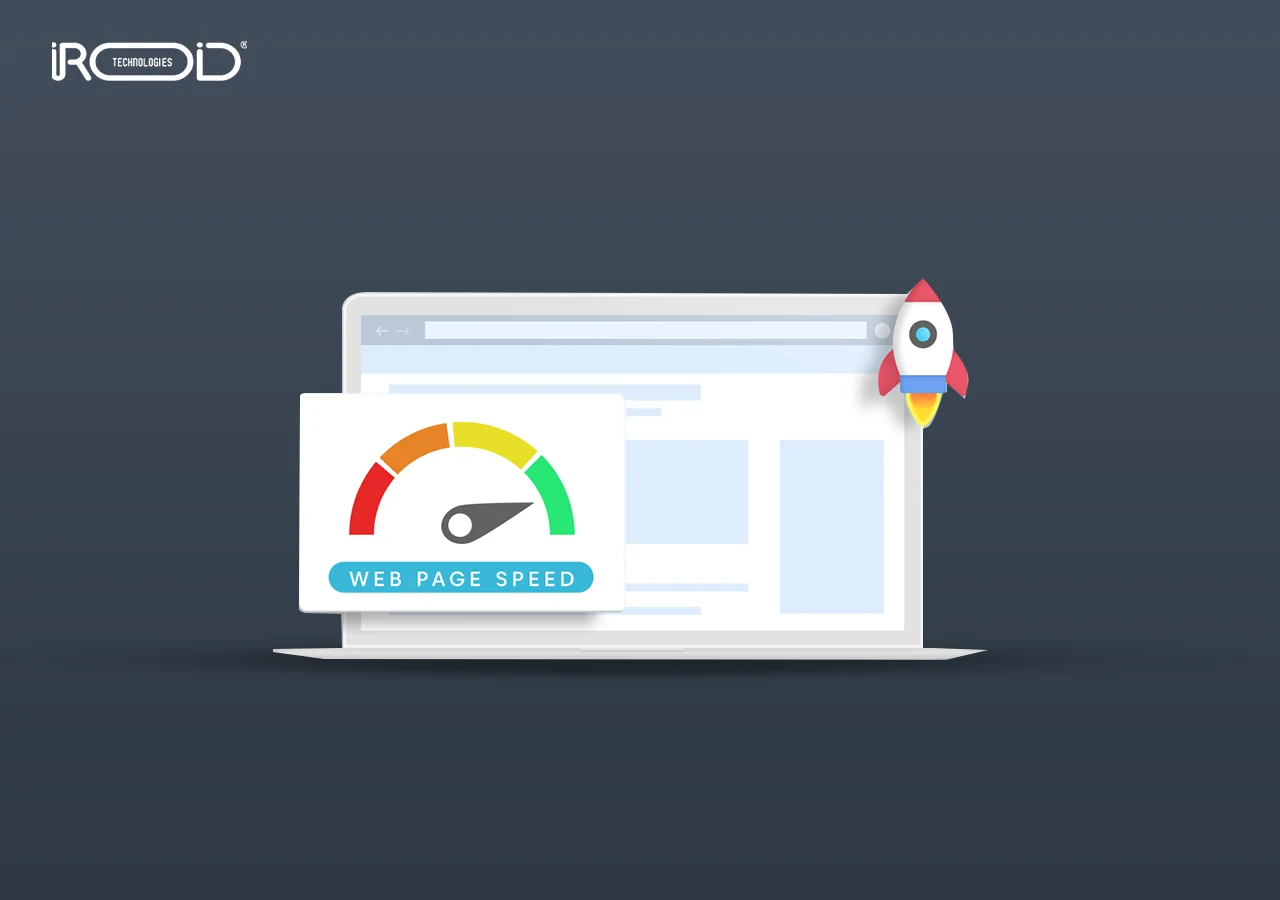Tips for improving website loading speed

The speed of your website's pages is crucial to its overall performance. However, if you don't understand how this metric works and, more specifically, the factors that influence it, it could be difficult to get better. You need a web development company in India that can help your web pages load smoothly and quickly to lower your bounce rate and boost visitor engagement. In addition to improving user experience (UX), a speed-optimized website can help you rank higher in search results. In this post will define page speed, discuss its significance, and provide measurement instructions. After that, we'll provide you with nine easy ways to speed up the loading of pages.
Now let's get going!
The quantifiable and subjective quality of a website's user experience is collectively referred to as "web performance," with a focus on the page's dependability and speed. There are several actions website owners and developers can take to enhance the functionality of their websites. These procedures involve selecting reputable providers for hosting, content caching, and load balancing in addition to optimizing web design elements like image sizes, code formatting, and external script usage. In addition to providing a better user experience, websites that load more quickly and consistently also typically rank higher in organic search results, are more visible to potential visitors, and frequently have higher conversion rates.
How to test website performance
Measuring the performance of a website is an essential first step in making improvements. Users' (and other parties') perceptions of a website's speed and dependability are influenced by several factors, and the only way to determine which actions will result in the greatest improvement is to measure these factors. There are several free tools available for measuring performance. What should owners of websites assess with these tools? The Core Web Vitals, a collection of three metrics that gauge significant facets of web performance, are an excellent place to start:
1. The largest element on a page loads the fastest according to Largest Contentful Paint.
2. The First Input Delay gauges how fast a page reacts to input from users.
3. The measure of a page's elemental visual stability is called Cumulative Layout Shift.
Enhancing a page's Core Web Vitals not only improves user experience signals but also raises the page's organic Google search result ranking.
Time to First Byte (the speed at which a page loads), DNS lookup speed (the speed at which a page's Domain Name Service converts a domain name into an IP address), and Time to Interactive (the speed at which a user can interact with a page) are additional crucial metrics to assess.
Take into consideration the following instances to understand how measuring these metrics might be put into practice:
1. A webpage that takes too long to load its largest component is one with a slow Largest Contentful Paint. The owner of the website could look into whether any extraneous code is loading before that element and decide whether or not to remove it.
2. The time it takes for a webpage to retrieve resources from its origin server is excessive when it has a slow Time to First Byte. The owner of the webpage might look into the DNS provider and website host's response times to change or replace one or both of these services.
The finest website development services provided by a prestigious website development company can easily help you with your site optimization.
How to improve website performance
Although there isn't a set formula for excellent online performance, website owners can increase the speed and dependability of their sites by implementing the following best practices:
-
Optimize images
Because image files are typically larger than HTML and CSS files, images frequently take the longest to load on websites. Fortunately, image optimization—which usually entails lowering the resolution and dimensions as well as compressing the image file itself—can shorten the load time of images.
-
Limit the number of HTTP requests
Browsers must send multiple HTTP requests to most web pages to access the different assets, such as scripts, CSS files, and images. In actuality, dozens of these requests are needed for many web pages. A web page's overall load time may increase with each request since it requires a round trip to and from the server hosting the resource. The total number of assets that each page needs to load should be minimized due to these possible problems. The most time-consuming HTTP requests should be identified with the aid of a speed test.
-
Use browser HTTP caching
To speed up the loading of recently visited web pages, browsers store copies of static files in a temporary storage space called the cache. When it comes to webpage elements that don't change frequently, developers can tell browsers to cache them. The hosting server's HTTP responses include headers containing instructions for browser caching. Users who frequently visit certain pages will see a reduction in load times as a result of the server transferring less data to the browser.
-
Remove unnecessary render-blocking JavaScript
Unnecessary code on webpages can cause the page to load slowly overall by loading before more crucial content. Large websites with numerous owners contributing code and content on their own are particularly prone to this. Web page owners can find extraneous code on pages that perform poorly by using a web performance tool.
- Limit the use of external scripts
Every time a page loads, any scripted elements that are loaded from another location (like external commenting systems, CTA buttons, CMS plugins, or lead-generation popups) must be loaded. Depending on the size of the script, these can make a webpage load slowly or not at all. This is known as "content jumping" or "layout shifting," and it can be particularly annoying for mobile users who frequently have to scroll to view the entire webpage.
-
Limit redirect usage
When a visitor to one webpage is redirected to another, this is known as a redirect. Page load times are increased by redirects by a few fractions of a second, occasionally even by an entire second. Although they can occasionally be avoided, redirects can be overdone and eventually build up on larger websites with several owners. Clear policies regarding the use of redirects should be implemented by website owners, who should also routinely check key pages for pointless redirects.
-
Minify CSS and JavaScript files
When code is minified, it means that whitespace, extra semicolons, and code comments are eliminated, along with any other elements that a computer doesn't need to comprehend and execute the code. This results in slightly smaller CSS and JavaScript files, which save bandwidth and allow for faster browser loads. Minification is still a crucial best practice even though it typically results in only slight performance gains.
To know more about the best web practices for responsive web design reach out to our article.
Utilize reliable third-party services for essential website features
1. Hosting: If the origin server for a website is responding slowly to requests, even the most well-designed website will load slowly. Owners of websites should select a server with a good track record of dependability and an average response time of less than 200 ms.
2. DNS is a system that plays a crucial role in the loading of web pages by translating domain names (like example.com) into IP addresses. Instead of depending on the DNS provided by their web host, website owners should select DNS services that provide results (or "resolve") swiftly and consistently.
3. Caching: Web content will load more quickly for users if it is located closer to where they are requesting it. It is recommended that website owners employ content delivery networks (CDNs) to cache web content in multiple global locations. This way, user requests won't have to travel thousands or even hundreds of miles, across numerous autonomous networks, to reach the origin server of the website.
4. Cybersecurity: The functionality of a website can be negatively impacted by DDoS attacks, malicious bots, and other cyberattacks. Website owners should select a web application security provider that filters out malicious traffic without slowing down legitimate traffic, but this is too broad a topic to cover in detail here.
How iRoid Helps Improve Your Web Performance
If your company depends on your website as one of the primary channels for connecting with customers, then optimizing website performance will be very beneficial. However, it can be difficult given the wide variations in devices, browsers, operating systems, and connectivity. Furthermore, bear in mind that there is no definite beginning or ending to this process. You don't need to make all of the recommended changes right now. Examine the results of the monitoring tool for a while, make the necessary adjustments to the website, and then contrast the performance before and after the modifications. Iroid, the best website development company in Kerala offers website development services that are well worth looking into if you're looking for a tool to help you optimize the performance of your website. iROID helps you maintain the functionality and availability of your website by guaranteeing end-to-end visibility into every element of your application.

